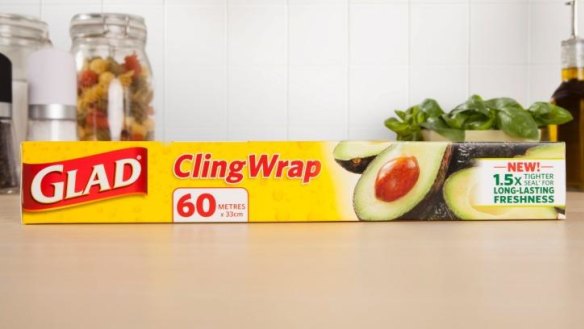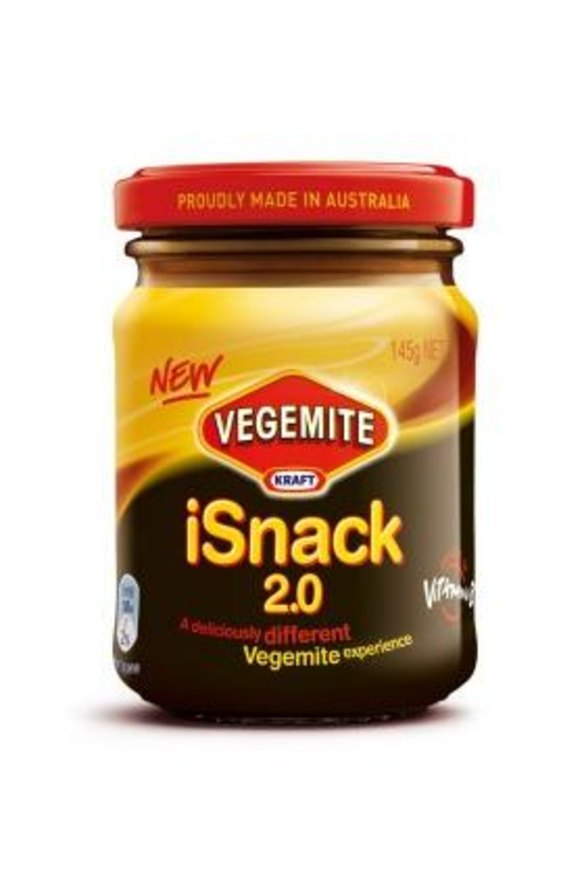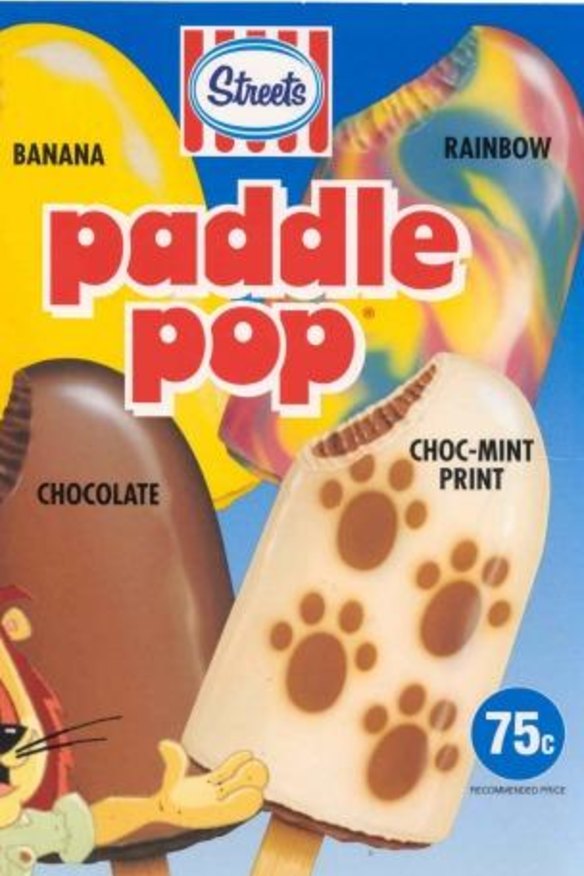Social media outrage reveals the customers always write
When much-loved brands decide to change their products and tweak their recipes, they run the risk of backlash from consumers who have been newly empowered by social media.

It wasn't supposed to be hard, and certainly not dangerous. Sharon Lee, like tens of thousands of Australians over the festive season, pulled out a fresh roll of Glad Wrap to cover the leftovers of a scrumptious feast.
But the usually dextrous preschool teacher from Eastwood shred the tip of her right thumb on the metal cutter bar, which Glad, in a redesign, shifted from the bottom of the box to inside the lid. Apart from blood, the product drew her ire.
"In what world is it logical to move the cutter bar to the inside of the lid?! It doesn't work, the plastic doesn't rip properly. It's immensely frustrating. Changing brands!" she vented on Facebook.

Lee is among thousands of "unGlad" customers who bombarded Glad Australia's Facebook page with lengthy complaints, tales of "Christmas Day debacles", and threats of a boycott. They raged on breakfast radio and prime-time television. Sportsbet even released odds on whether Glad Wrap would be discontinued this year.
The debacle is among the latest in a string of social media backlashes against companies that have dared to tinker with the recipe or design of a product with a fiercely loyal following.
In the digital age of constant connectivity, over-sharing, and ease of access to like-minded people, companies are under growing pressure to remain innovative without isolating their loyal customer base in a re-energised culture of consumer activism.

Now, 13.6 million Australians are active on Facebook, 4 million on Instagram, and 2.8 million on Twitter, according to digital agency Vivid Social. Prime Minister Tony Abbott labelled tweets and posts as "electronic graffiti" while defending his decision to knight Prince Philip this week, but even his government spends millions on monitoring digital media.
Digital marketing strategist Tiphereth Gloria says social media has "democratised and amplified" consumer voices and demolished traditional communication barriers between companies and the public.
"So when multiple people begin to complain or praise a product a groundswell of support can build, as other people see that they're not the only one thinking that. The momentum builds and builds," she says.
"The anthropological theory about wanting to belong to a particular tribe or a crowd expressing a certain point of view is strong. And the stronger the opinion, the more likely people are going to jump on the bandwagon."
She believes product makers and vendors are taking social media reactions more and more seriously each year as they begin to recognise the highly visible, emotional and viral-like nature of such protests.
Take it seriously they might, but two recent responses to backlashes reveal the limits of social media influence. Food giant Mondelez is planning to stick with its new Cadbury Creme Egg recipe, despite the internet bristling for weeks in indignation.
"I unreservedly condemn the crime against confection that is the Creme egg," wrote Twitter user @Colmogorman. "Please re-think this hasty boardroom decision," cried @Geordiebird_DXB.
The hashtag #CremeEggGate trended on Twitter, with upset users calling for "petitions, protest and public outrage". But a Mondelez spokesman says the new recipe is here to stay, and that "positive responses" were consistent with results of consumer tests conducted before the change.
Nestle, owner of Allen's Lollies, is also rebuffing calls to keep the multicoloured Killer Python gummy in its original, 47 gram form. In October, consumers took up their virtual pitchforks when it announced the snake would be reduced by half.
Nestle also copped a beating for entangling the announcement with claims about its efforts to "help Australians better manage their health". They claimed the down-sizing was in line with its portion-control philosophy.
The hashtag #TreatSizePython was hijacked by upset Twitter users, with United States digital agency Datarank reporting 90 per cent of the 2000 killer python-related tweets in the first couple of days were negative. About 15 per cent of the tweets were about price concerns and 12 per cent were about the failed health messaging.
But, tellingly, only 1 per cent of the tweets related to never buying the killer python again, according to Datarank. Nestle says there are no plans to reconsider the change.
The rise of consumer power
In late January, the Australian kitchen revolt ended. People power prevailed. Glad, which had nervously watched consumer fury build for three months, declared it was returning the serrated bar to its original position.
"It was the first time we've had a consumer backlash full stop," says Phil James, marketing director of Clorox, which owns the brand Glad. "We were shocked by the magnitude of the feedback. We went very quickly from being alert and in monitoring mode, to realising we had to change it back."
Glad had tampered with a product format that Australian shoppers had familiarised themselves with for 49 years.
James says the new design followed months of research and underwent extensive in-home testing. But he concedes traditional research methods could ultimately only provide guidance and that social media, on the other hand, offered research in real time. "And you can't beat that," he says.
Social media educator and consultant Laurel Papworth says the days of focus groups and behind-the-door product development are long gone. Companies have to dive headlong into collaboration and co-creation to survive and thrive in the social media age.
"Customers may still get upset, but they appreciate being asked and not treated like children," she says.
It is hard to forget the marketing disaster around Kraft's cheesy vegemite attempt called iSnack 2.0 in 2009. Kraft picked the name from 48,000 suggestions entered into a competition. The product triggered hate groups, and torrents of online bile led to its quick burial.
But perhaps collaboration could have saved toy giant Hasbro from the social media uproar over Christmas. Mums and dads across the US flooded its Facebook page to express their anger over a syringe-like "extruder tool", suspiciously shaped like male genitals, in the Play-Doh Mountain Cake toy set. Hasbro says it will replace the toy.
There are also times, says Laurel Papworth, when the social community gets it wrong. She says when Facebook creator Mark Zuckerberg introduced the "news feed" feature, three quarters of all users signed a petition demanding its removal.
"He wrote in a post: 'Take a chill pill folks, it's staying, let me tell you why'. I don't know how many chief executives would look at 75 per cent of their customers signing a petition and say: 'Nup, we're going to keep the product'," she says.
"I'd like to see more companies step up and tell customers: 'Well, we put a lot of research into this and we definitely think it's a good and positive change and we want you to give it a go'. People may argue for the next few days, but it will settle down."
Paddle Pop fans went into meltdown in 2012 when Streets ice-cream revealed it had tweaked the banana-flavour recipe to remove vegetable oil. The new version, argued consumers, was "artificial" and "disgusting".
But Streets maintained the new recipe improved the taste and nutritional content. It now says: "the paddle pop continues to be an Aussie favourite".
Dean Wilkie from the University of New South Wales believes too many companies are developing products with the aim of maximising the returns from their million dollar investments in machinery.
"The reality is you end up with a product that no one wants. So they launch products not based on what consumers need but what our manufacturing department can make," he says.
"I would estimate that 99 per cent of all brands out there would have made a product that has failed because they haven't listened to the consumer or haven't put enough money behind it."
He also says social media is allowing consumers to keep companies accountable to brand promises such as quality, in ways not possible before.
Cadbury was castigated by consumer and environmental advocates in 2009 for replacing cocoa butter with palm oil in its recipe for the Tasmanian-made chocolate blocks. Palm oil is linked with deforestation, habitat degradation and animal cruelty. Cadbury went back to its old recipe.
"Ethical behaviour is not just about breaking the law like it was 20 years ago. Today it's about not breaking a brand promise as well. It's about: 'What's not going to blow up in our face and damage our reputation?" says Wilkie.
Haters gonna hate, profits gonna rise
Domino's Pizza appeared to be going through a crisis in March 2013. The chain's new "game changer" menu - its "biggest announcement in 20 years" - was being reported as a massive flop, with disappointed fans revolting on social media.
"This is not a game changer, what a waste of my time," a Facebook user wrote. "Really? That's it? After 20 years, that's the biggest announcement you have to make?" carped another on YouTube.
Looking back, chief executive Don Meij says the intense scrutiny of the Chef's Best range, which included items like Barossa Valley shiraz infused lamb for $8, ultimately lifted full-year profits by 20 per cent.
"We dream of having one of those again. That day we were sitting back, and all the morning shows were grabbing a hold of it and radio, and there was so much debate. People wanted to try it and form their own opinion."
Domino's braved the social media storm and came out still holding great faith in its new pizza line and relishing the extra attention. Meij says the internet frenzy also triggered a continuing flow of valuable feedback. The Best Chef's range lives on.
Now, Domino's has seven full-time social media staff who monitor all channels 24 hours a day, seven days a week. Comments must be responded to within 30 minutes.
Jason Juma-Ross, head of digital intelligence at PricewaterhouseCoopers, says companies are rapidly realising the richness of data available to them via social media and deftly using tools to measure the volume, velocity and speed of social media outrage.
"There are key dimensions they want to know about. Obviously, the volume of conversation. You want to know about velocity, so how fast that conversation is moving," he says.
"Most importantly, you can know sentiment. It's very important, because it's a measure of how happy or unhappy the expressions of customers are about a service or product. It's complex."
In the end, when a storm erupts, companies like Glad can take solace in the fact that there must be a deep attachment to a product for consumers to create a meaningful uproar.
"These people are talking about you because they care. Silence is worse," Laurel Papworth says.
Restaurant reviews, news and the hottest openings served to your inbox.
Sign up- More:
- Restaurant news
